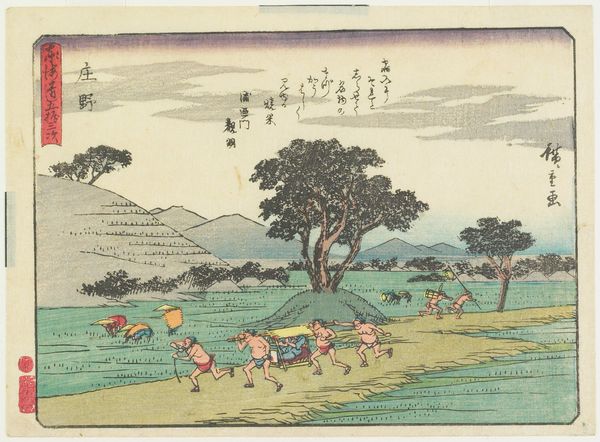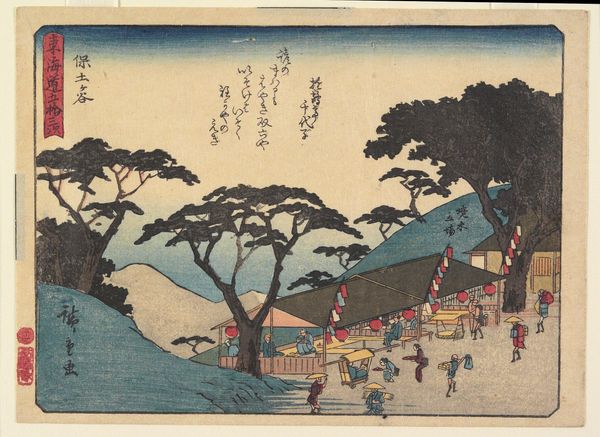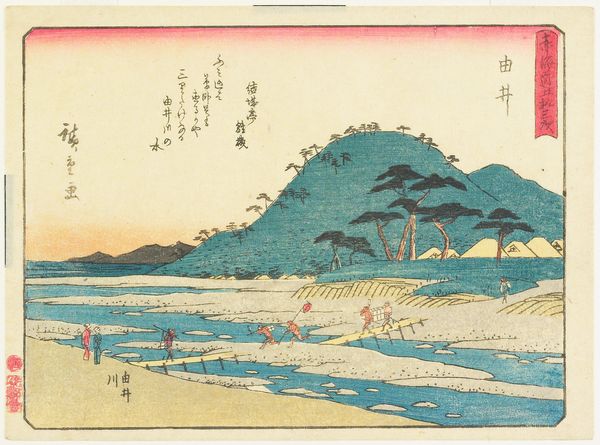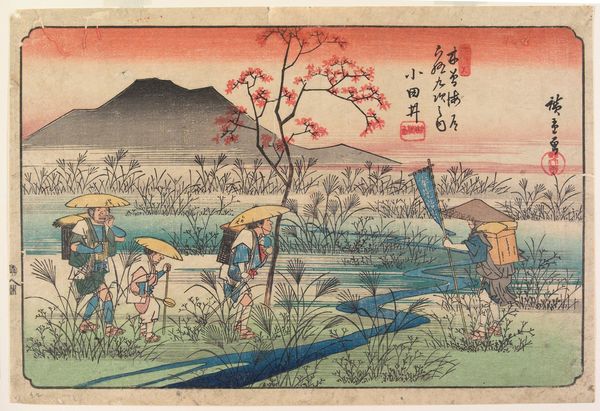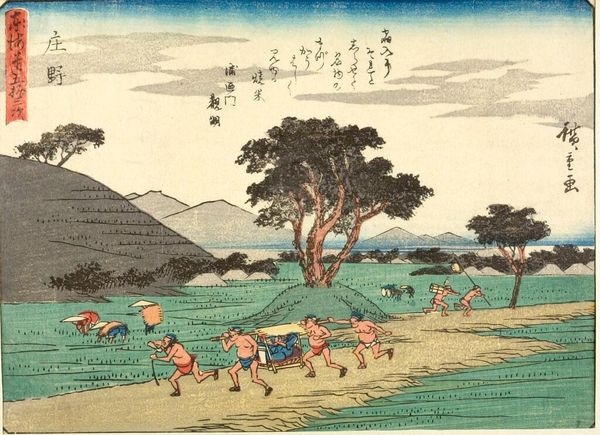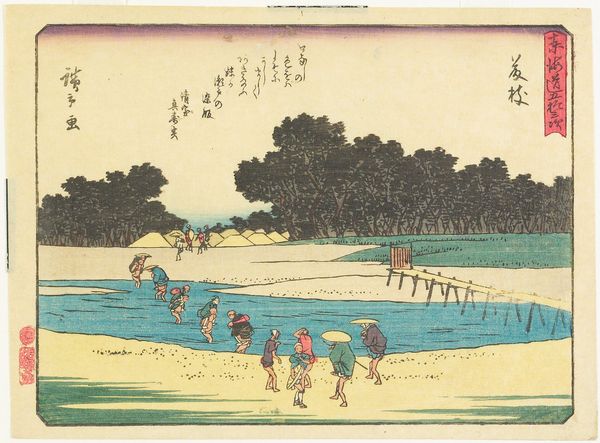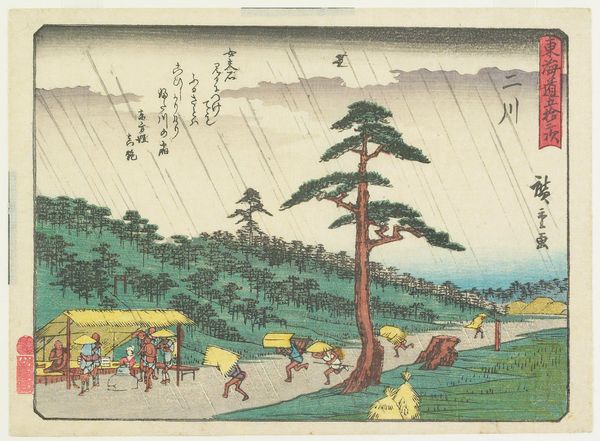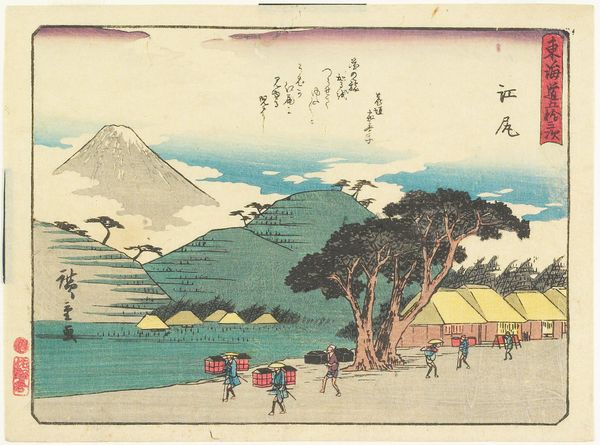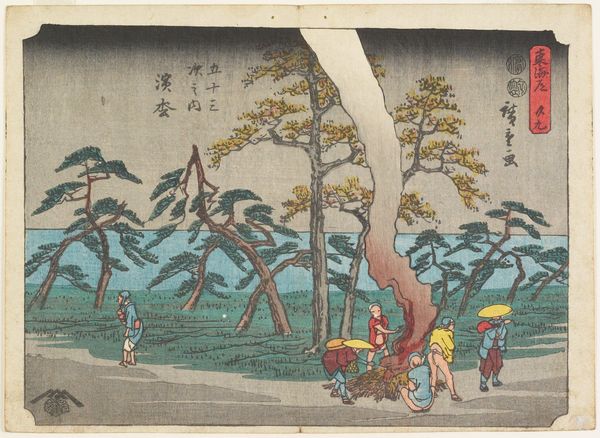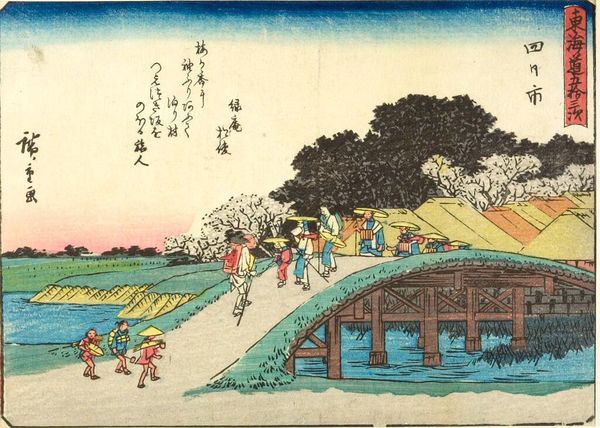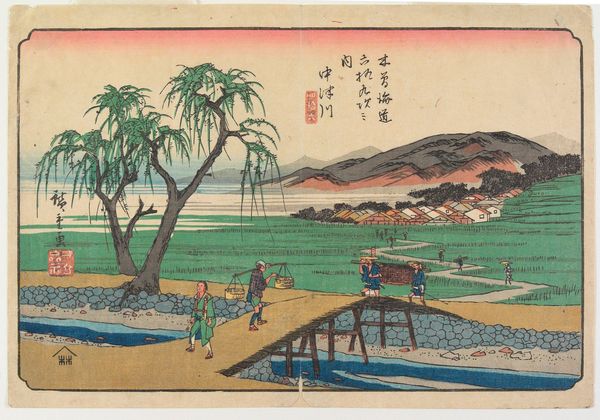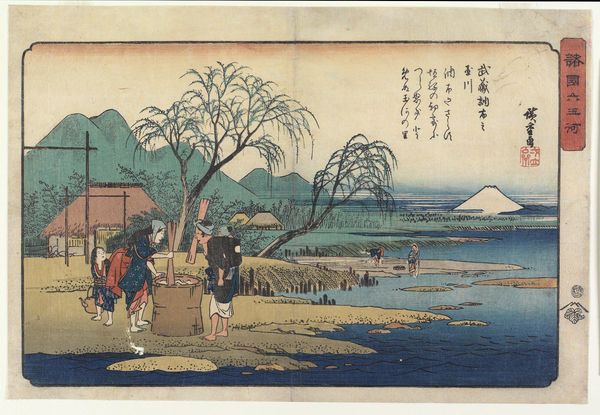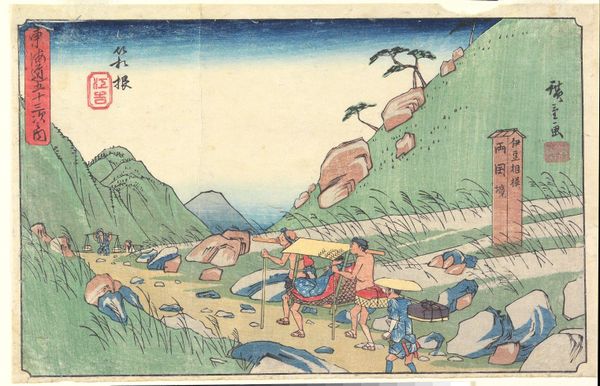
print, ink, woodblock-print
# print
#
landscape
#
ukiyo-e
#
japan
#
ink
#
coloured pencil
#
woodblock-print
#
line
Dimensions: 6 x 8 1/4 in. (15.2 x 20.9 cm) (image)6 5/8 x 8 7/8 in. (16.8 x 22.5 cm) (sheet)
Copyright: Public Domain
Curator: Immediately, the dynamism strikes me. The urgency practically leaps off this woodblock print. Editor: Indeed. What you are responding to is Utagawa Hiroshige's "Sho-no", created circa 1840-1842. The artwork is held at the Minneapolis Institute of Art, and exemplifies ukiyo-e landscape prints from the period. Curator: The use of line here is just exceptional, especially considering this is a print. Look at the runners—the sense of frantic speed. Who are they carrying, and why the rush? The context hints at class divisions, doesn't it? Forced labor perhaps? Editor: Precisely. The print likely depicts a lord or high-ranking individual being transported, highlighting the stark social hierarchies of Edo-period Japan. Notice the cool blues of the sky contrasting with the warmer tones of the road, a semiotic device drawing our eyes from the peasants in the field to the speeding group. Curator: And what of those field workers? Bowed down, almost erased by the landscape. They are figures who don't appear to be in charge of their own lives, or their own movements. I keep coming back to how the scene tells the story of labor and power. The formal elements support and echo these political and social meanings. The diagonal line, and how all the workers are bending. They form lines across the print, with the vertical tree holding the diagonal down. This all combines to have a feel. The emotion of anxiety, fear and an unspeakable tension of living under this condition. Editor: Very true. Consider too how Hiroshige employs atmospheric perspective; the distant mountains are paler, creating a sense of depth that throws the activity of the foreground into stark relief. It’s masterful compositional control reinforcing the print's socio-political commentary. He also uses the colours very precisely to control which groups your eye notices most of all. This also can control emotions of warmth vs cool in scenes like these, especially when these palettes have symbolism in the social zeitgeist. Curator: It truly speaks volumes about the constraints and the exertion of lower-class Japanese laborers during that period. What seems like a simple snapshot turns out to be deeply incisive when we look beneath the surface. Editor: It underscores the capability of formalist analysis in connecting an artwork's structure with wider, significant political issues. It is amazing the precision used to invoke emotion and reflect these conditions and constraints you speak of.
Comments
No comments
Be the first to comment and join the conversation on the ultimate creative platform.
